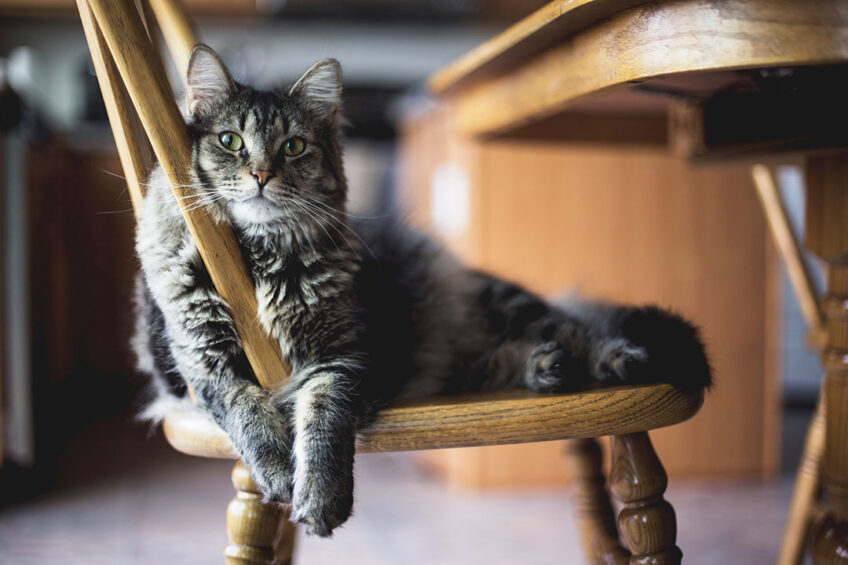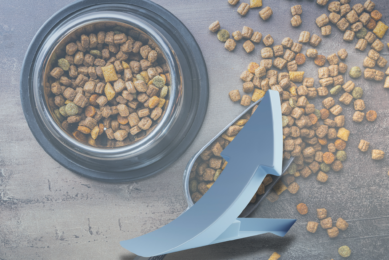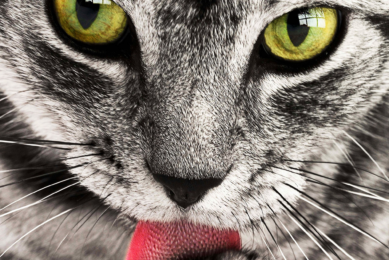Future of digestibility testing in cat nutrition

Researchers at Wageningen University found that digestibility trials with privately owned cats, have the potential to produce highly representative data for the target population, but validated protocols are required. In their recently published study, the researchers determined the protocol requirements of in-home cat food digestibility testing.
To evaluate the quality of formulations, ingredients, and processing technologies, pet food companies routinely conduct digestibility testing on the final product at dedicated facilities that employ a limited number of cats kept under standardised conditions. However, the standardised housing conditions differ greatly from the actual living conditions of cats in households, making the results on food digestibility less representative of the pet cat population for which the foods are intended.
On the other hand, in-home testing can provide information on nutrient digestibility in cats with different characteristics (e.g., sex, neuter status, age, breed and food history) and living conditions (e.g., housing, eating patterns and activity). In addition, it provides important parameters related to food quality as perceived by the cat owners.
In-home testing setup
In this study, researchers analysed variation in food digestibility values in privately-owned cats across 8 days to establish the minimal period of adaptation and faecal collection and the number of cats required for reliable apparent faecal digestibility estimates of dietary nutrients and energy. To establish the protocols, researchers used 2 test foods: commercial dry extruded cat foods that differed in ingredient quality and inclusion and nutrient composition in such a way that established a contrast in nutrient digestibility; the foods were formulated to contain either 16.0 MJ/kg ME (Food A) or 14.2 MJ/kg ME (Food B). The cats were fed following the feeding schedule they were used to (i.e., meals or ad libitum); cat owners were provided with daily food portions and were instructed to only provide the test food to their cats. Water was instructed to be provided ad libitum.
Current protocol requirements
To better understand the protocol requirements for in-home cat food digestibility testing, it’s important to know what the current standard protocols entail. The current protocol requirements for experimental studies on cat food digestibility provided by AAFCO and FEDIAF include a minimum of 6 healthy, fully grown cats over one year of age, individually housed for 10 days with 5 days of adaptation and 5 days of faecal collection.
Establishing the adaptation period
The required length of the adaptation period to assess digestibility values may vary between nutrients and energy. The use of an indigestible marker is a more practical approach than quantitative faeces collection when conducting in-home digestibility studies. Food digestibility measurements with an indigestible marker require a sufficiently long adaptation period to ensure a constant rate of marker excretion in the faeces, as well as to allow the adaptation of food-specific digestive processes. The time to reach a constant rate of marker excretion in the faeces is determined by the gastrointestinal (GIT) transit time, which might vary between cats; there was high variability in GIT transit time among individual cats, with shorter times for younger cats compared to older cats. In addition, housing conditions, meal size and meal frequency are all likely to impact GIT transit time as these influence gastric emptying rates.
In the current study, researchers found out that the cats’ digestive system adapts rapidly to novel foods and an adaptation period of 5 days as indicated by AAFCO and FEDIAF can be shortened to 2 days to yield stable digestibility values.
Ideal faecal collection period
In this study, researchers showed that faecal samples from day 3 onwards can be used for the determination of apparent faecal digestibility values; analysis of variance confirmed that marker concentration in faecal samples from cats fed the more digestible food (Food A) was stable from day 3 onwards, while the less digestible food (Food B) showed marker stability from day 2.
The researchers remarked that: “Considering the importance of stable faecal marker excretions for accurate digestibility estimation, it is relevant to further study the GIT transit times in cats for more extreme food contrasts such as wet versus dry food, food formulations, compositions, and feeding regimes. On the other hand, to address future concerns of owners regarding the safety of test foods, alternative markers should be investigated and made available for in-home digestibility studies.”
Every cat is unique
The appropriate number of cats for in-home digestibility studies relates strongly to variation in digestibility values and the accepted margin of error of the digestibility assessment. As in-home digestibility testing is conducted under less controlled conditions, the greater variability compared to testing in dedicated feline facilities would require a larger number of cats to achieve the same level of precision as obtained with six cats prescribed within the AAFCO and FEDIAF protocols. In the current study, assuming a margin of error currently accepted for digestibility testing, the researchers found that the required sample size for an in-home food test of digestibility would range from five to twelve cats, depending on the properties of food and nutrients of interest.
On the other hand, required sample sizes for in-home food digestibility trials depend on the test food used (form, composition, and digestibility) and the variation in digestibility values that originate from test subjects (cat characteristics) and study conditions (e.g., owner compliance and faecal sample contamination). As every cat is unique, cat-related factors (e.g., age, sex, body weight and condition, food history and feeding level) and owner (non) compliance may impact digestibility measurements, potentially resulting in a higher number of cats required especially for heterogeneous study populations.
Owner compliance plays a key role
According to the researchers, for the realisation of the in-home test potential, owner compliance is of crucial importance. Non-compliance, like through the (accidental) provision of additional food or treats or faecal sample contamination (e.g. with cat litter), increases variation in digestibility values and can lead to misinterpretations. As owner compliance is influenced by the duration and complexity of the requested tasks, the researchers suggested that designing studies of minimal length and providing short training programmes for cat owners is highly relevant. They also suggested future studies to assess the precise impact of non-compliance on digestibility values.
In conclusion, this study has identified protocol requirements for in-home cat food digestibility testing. However, further studies could focus on identifying and controlling sources of variation for in-home digestibility testing which will lead to improved repeatability, accuracy, and precision, thus making in-home testing more attractive for future routine use in pet food testing.
Based on an original article by E. Bos, W. H. Hendriks, B. Beerda and G. Bosch. 2023. Determining the protocol requirements of in-home cat food digestibility testing. Frontiers in Veterinary Science, 10:1129775.











